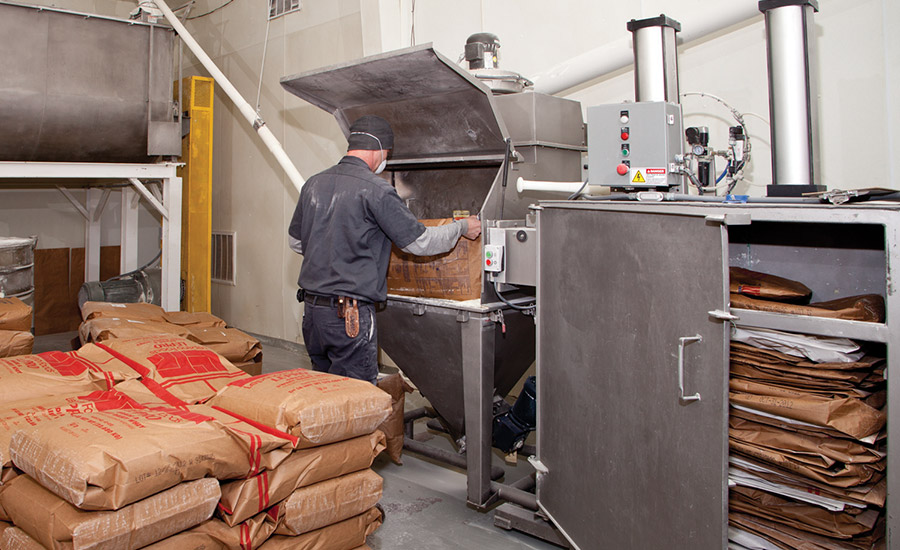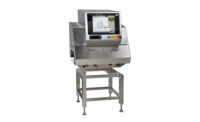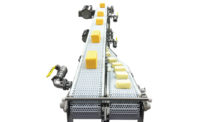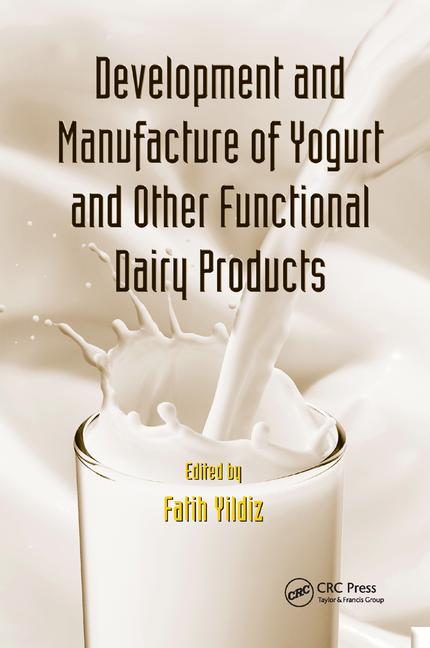Conveyors move raw materials and finished products through a dairy plant. After filling, packages might travel to secondary packaging stations, to freezers, to warehouses and to pallets.
The type of conveying system that is best for your plant depends upon what you make. Empty jugs and bottles are typically conveyed on a cable conveyor, especially if mounted overhead and accumulation is required, said Fred Beer, president of Westfalia Technologies, Deam Division. Filled bottles typically run on a tabletop thermoplastic chain conveyor and have some type of chain lubrication.
He also noted that installing conveyors with easily removed chains and wear strips without the need for special tools aids operators and clean-up personnel who have to dismantle the equipment for maintenance or cleaning. The entire conveyor should be fully wash-down capable and preferably equipped with an integral wash system, Beer said, adding that all conveyor designs should meet or exceed FDA and 3-A design standards.
Vertical systems in an ice cream plant
Often conveyors are on the plant floor, but vertical processing systems offer benefits. A vertical system saves floor space and is efficient at holding products for a period of time in temperature-controlled environments, according to IJ White Systems. Examples are the refrigerated cooling of cheese and the freezing/hardening of ice cream. A vertical processing system can also be used for hot/hold systems, such as the fermentation of yogurt products, IJ White noted.
The equipment supplier engineered a vertical processing system for a Midwest ice cream processor that was increasing its production of novelty items. The manufacturer’s process flow was to pack ice cream sandwiches, stick novelties and individual cones into cases, place the cases onto pallets and store the pallets in a blast freezer.
After three days, the ice cream processor transferred the cases to a holding freezer. This created quality problems since the items packed on the edges of the pallet froze and hardened at different rates than the items at the center of the pallet.
From 3 days to 1 hour
The plant manager did not know the reason why he held the products for three days except that it resulted in a frozen product. When engineers from IJ White Systems were called in, the first thing they had to determine was the actual dwell time needed in the blast freezer for the various items. It used a test freezer with temperature-monitoring probes. The engineers found that the freezing dwell time of the individual products was one hour.
Reducing the dwell time from three days to one hour resulted in these benefits:
- less product handling
- better and more uniform product quality
- improved product flow through the dairy plant at a steady rate
- plant space savings and significantly lower costs for storage.
Then IJ White Systems reviewed the individual throughput rates for the different products by looking at upstream equipment such as the fillers and their production capabilities. In this case, the novelty manufacturer was using three different machines to create a variety of products.
Instead of proposing three separate vertical freezers, IJ White engineered a single vertical blast freezing system with integral lane dividers to assure products were segregated through the freezing process. This efficient design freed up much needed floor space and dramatically improved the plant’s operation while reducing cost.
Sidel, another equipment manufacturer, also takes the approach of looking at an entire manufacturing process. And it encourages dairies to look at the total cost of ownership when making purchasing decisions.
“Beverage producers are generally now taking a more holistic approach to the installation of new bottling lines,” said Clive Smith, Sidel’s executive vice president of sales and marketing.
Whether bottling water at high speed or packaging dairy products with high sensitivity, it is always best that plant managers consider the specific production needs of any line from the very beginning, the company stated. Its engineers have expertise in all the processes involved in the PET bottling process, from blow-molding to palletizing. The company states that its palletizers make transportation more effective and production more efficient.
A cleaner powder solution
Franklin Farms East, Washington, N.J., is a processor of dry milk and nondairy food products with a processing and repackaging facility in Frostburg, Md. Besides dairy products, Franklin Farms East makes formulations based on corn and wheat flour, such as nondairy coffee creamers and lactose-free products.
It used to be that bags of powdered ingredients were dumped manually into a hopper that feeds a blender. This generated dust, wasted product and created a potentially hazardous environment.
To comply with new stricter USDA and FDA sanitary and safety requirements, satisfy customer demands and eliminate waste, Franklin Farms East installed a bulk bag discharging system consisting of a forklift-loaded bulk bag discharger and an 8 cubic-foot capacity sanitary stainless steel hopper. There is also a manual bag dump station, a bag compactor and a hopper for adding smaller amounts of ingredients to the blender. Both the bulk bag discharger and bag dump station feed their ingredients to the blender through flexible screw conveyors. The equipment is from Flexicon Corp.
Major raw materials arrive in 2,000-pound bulk bags, said Jonathan Riggs, the vice president of production for the dairy processor. To overcome a low-ceiling restriction, a forklift suspends the bulk bag directly over the lower half of the split frame discharger while the bag discharges through a manual clamp ring positioned atop a pneumatically actuated telescoping tube. The tube raises the clamp ring for a dust tight connection to the bag spout, and then lowers, applying downward tension to keep the spout taut for total evacuation. At the same time, bag activators raise and lower the bottom edges of the bag, directing material into the outlet spout and raising the bag into a steep “V” shape to promote total discharge into the floor hopper.
“The ingredient discharge, blending and repackaging process is now totally enclosed and dust-free,” Riggs said.
Pallet primer
Dairies bundle their finished goods on pallets which are then moved to a warehouse or loaded onto trucks. Efficient pallet loading can be achieved best with the use of a robotic palletizing system, said Beer of Westfalia Technologies. An operator should inspect pallets for damaged or broken boards prior to product loading in order to reduce load failures, product and packaging waste.
Handling pallets in an automated storage and retrieval system (AS/RS) reduces pallet damage by eliminating fork trucks, Beer said. An AS/RS also reduces or eliminates multiple handling of pallets between the palletizing operation and truck loading.
While finished product pallets in fluid plants are typically loaded efficiently, storing them is not always done in the most efficient manner, Beer noted. “Conventional racking systems are very inefficient use of storage space. High-density automated storage systems can increase space utilization by up to 50%,” he said.
Plastic pallets help keep Listeria at bay
A benefit of using plastic pallets instead of those made of wood is a “significant” decrease in hygiene-related problems, said Jeff Liebesman, CEO of iGPS Logistics. Plastic cannot absorb bacteria like Listeria and is exceptionally easy to clean.
Fred Beer, president of Westfalia Technologies, Deam Division, said a plant manager should never allow outside pallets to travel beyond the main receiving dock or remain in the plant following unloading of product.
“Use captive pallets only for internal transfer of product/packaging within the plant,” he advised. “Specify plastic pallets for palletizing and always wash pallets before storing for use at a later date.”
Another advantage of plastic is that it is not prone to splintering, which can damage dairy products, Liebesman said. Wood splinters and nails have been known to jam equipment, which can cause shut down of assembly lines and AS/RS systems, he said.










